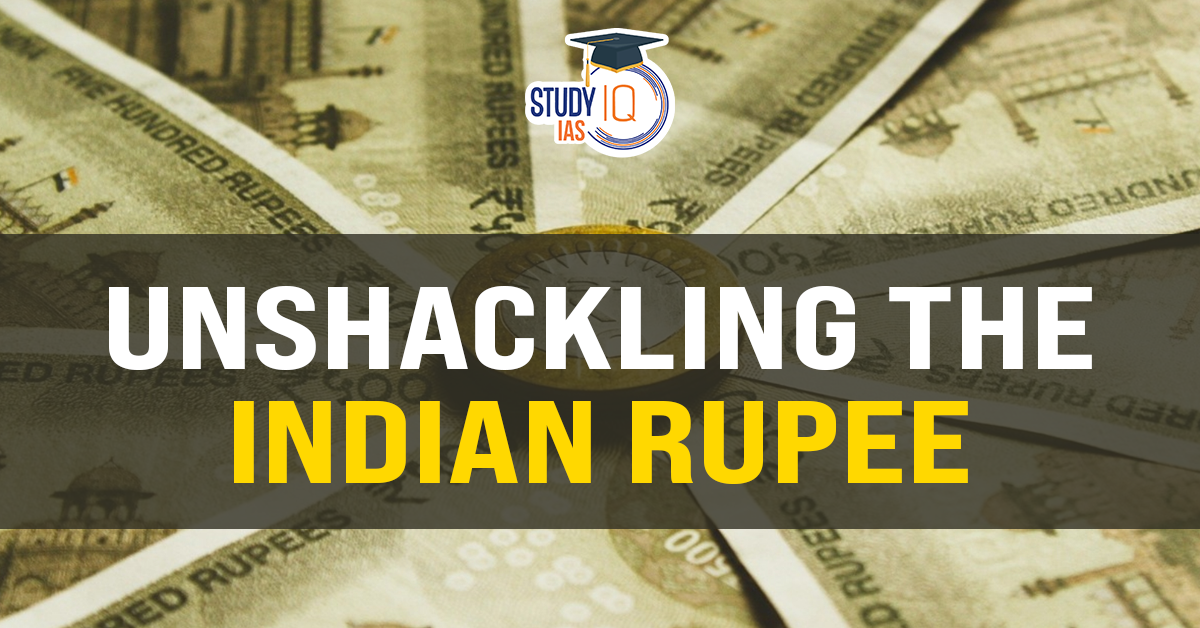Table of Contents
Context
- Since 2022, the Reserve Bank of India (RBI) has been intervening in the foreign exchange market to maintain the stability of the rupee. This intervention includes buying and selling dollars to control the currency’s movement. The RBI’s actions have led to a significant reduction in volatility.
- Historically, from 2000 to 2020, the average annual volatility of the rupee-dollar exchange rate was around 5%.
- However, between April 2023 and August 2024, this volatility drastically reduced to 9%, an extraordinarily low level compared to both India’s historical averages and emerging market peers.
Rupee Pegged to the Dollar
- The stability in the rupee’s value is not a result of market forces but rather RBI’s active intervention, which some analysts argue has effectively pegged the rupee to the dollar.
- RBI’s New Currency Policy: Since late 2022, the RBI has been intervening by:
- Buying dollars to prevent the rupee from appreciating.
- Selling dollars to stop the rupee from depreciating.
This has created a situation where the rupee’s exchange rate is artificially stable, without any public announcement or debate, raising concerns that it has become de facto pegged to the dollar.
Theoretical Issues with State-Controlled Currency
- Market Price Determination: Economically, currency prices should be determined by the market, not the state.
- Just as the state does not fix the price of tomatoes or computers, it is not advisable to set the price of a currency.
- Role of the Price System: In a free market, the price system helps convey signals about supply and demand, allowing buyers and sellers to adjust their behaviour accordingly.
- When the state controls the price, this information system is distorted, leading to inefficiencies.
- India’s Pre-1991 Experience: In India, before the 1991 economic reforms, state-controlled pricing led to widespread shortages of goods, including cars and telephones.
- Imports were especially scarce due to pegged exchange rates, which led to a shortage of foreign exchange and a crisis in 1991. This is a pattern seen in other countries too, including:
- Argentina
- Brazil
- Mexico
- Russia
- South Korea
- Thailand
- Turkey
- Global Trend Toward Flexible Exchange Rates: Following such crises, many emerging economies have opted for more flexible exchange rates in recent years.
- Imports were especially scarce due to pegged exchange rates, which led to a shortage of foreign exchange and a crisis in 1991. This is a pattern seen in other countries too, including:
Practical Benefits of the Previous Flexible Exchange Rate System
- Flexible Exchange Rate System: India had been following a flexible exchange rate policy since 1991. This system had practical benefits:
- Business Cycle Adjustment: During periods of economic growth, when exports and foreign capital inflows rise, the rupee appreciates, helping to prevent overheating of the economy.
- Conversely, during downturns, the rupee depreciated, making Indian goods cheaper and more attractive to foreign buyers, supporting export-led recovery.
- Real Exchange Rate Stability: Over long periods, this flexibility ensured the real exchange rate remained stable, which is the exchange rate adjusted for inflation differences between India and its trading partners.
- This balance helped maintain India’s export competitiveness.
- Impact of Pegging on Exports: The shift to a pegged exchange rate system has led to an appreciation of the real exchange rate, making Indian exports more expensive.
- This could negatively impact initiatives like “Make in India” by reducing the competitiveness of Indian goods on the global market.
- Business Cycle Adjustment: During periods of economic growth, when exports and foreign capital inflows rise, the rupee appreciates, helping to prevent overheating of the economy.
Long-Term Economic Risks
- Market Distortion: The rupee’s artificial stability may distort market signals, making it difficult for businesses and investors to make informed decisions. In the long run, this could lead to inefficiencies in the economy.
- The Importance of the Exchange Rate: The exchange rate is one of the most important prices in any market economy. If India aspires to become a high-income economy, it must allow the exchange rate to respond freely to market forces, ensuring that it reflects supply and demand dynamics.
- Potential Costs of Currency Stabilization: While currency stabilisation may seem beneficial in the short term, artificially stabilising the rupee could prove costly in the long run, as it undermines the market-driven mechanisms that are essential for economic growth and global competitiveness.


 Foreign Contribution Regulation Act (FCR...
Foreign Contribution Regulation Act (FCR...
 World Economic Forum’s Future of Jobs ...
World Economic Forum’s Future of Jobs ...
 Rising Household Debt, Trends, Causes an...
Rising Household Debt, Trends, Causes an...





















